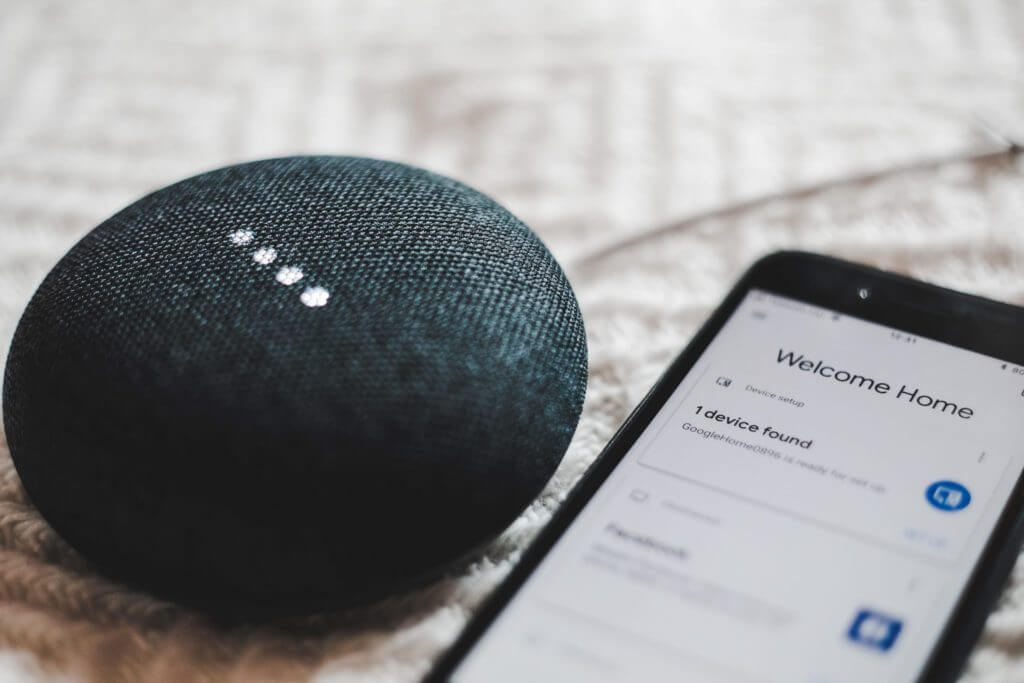Smart home technology has already been transforming our everyday lives significantly, with innovations that enable sophisticated management of energy consumption, home security, entertainment and ambience, as well as smart gadgets for fitness and activity tracking, and personal assistance. It is a rapidly evolving market, with the compounded annual growth rate for smart home devices currently being 31% and expected to rise to 42% by 2022.
Health monitoring at home currently involves the use of individual health gadgets that allow continuous wellbeing assessment for the user. The future smart home approach to health and wellness entails home-integrated contactless sensing technologies, engaging with healthcare infrastructure, that will empower us to holistically monitor and manage our health. Connected smart homes will not only revolutionise self-care, providing more affordable healthcare solutions but can also reduce the burden on the healthcare system by reducing monitoring and rehabilitation expenses and minimising overcapacity in hospitals by prioritising cases based on urgency.
Several smart technologies, from wearables to ambient gesture recognition devices, are increasingly being introduced. Their impact is fuelling the prospect of remote healthcare through the development of solutions for at-home health monitoring, physical rehabilitation, independent living and caregiving for the elderly and disabled, chronic and mental disease management and clinical diagnosis.
Google Fit, for example, offers smartphone camera-based heart monitoring, detecting subtle colour changes in the user’s fingertip, indicative of the flow of oxygenated blood, and respiratory rate monitoring using the optical flow technique to measure changes in chest movement. NuraLogic introduced the Anura app to perform blood pressure monitoring without physical contact. Google has recently launched its second-generation Nest Hub smart display, with an integrated low-energy mini radar sensor, a wellness monitoring device, offering continuous, unobstructed contactless sleep monitoring and data-driven personalised recommendations, to improve one’s quality of sleep. Although not intended for medical or diagnostic use yet, its potential use in health monitoring and clinical diagnosis is being explored via partnerships with Beth Israel Deaconess Medical Centre and the American Academy of Sleep medicine to evaluate its potential to monitor respiratory health – an application that can prove valuable in monitoring chronic conditions such as COPD. Sleep monitoring has also been targeted by SleepScore Labs with SleepScore Max and by Apple with Beddit. Amazon has been developing a new Alexa-powered device, a millimetre-wave radar, monitoring signs of sleep apnoea.
The evolving dream of the smart home extends beyond a smart bedroom. In ten years, one in three homes is expected to be equipped with a range of smart devices and services. Nobi has launched a hanging smart lamp, able to detect the fall of a senior living alone, ask them if they are ok and contact family members or emergency service providers. Casana has developed a toilet seat with an in-built cardiovascular health monitoring system, measuring blood pressure, stroke volume and blood oxygenation with clinical accuracy.
Well into the COVID-19 pandemic era, Stanford Medicine researchers are conducting a study to assess whether heart rate and temperature data from 5 different brands of wearable devices can be used to predict viral infections.
Breakthroughs in ambient intelligence and machine learning algorithms also have the potential to improve healthcare delivery, healthcare professional productivity and business operations in hospital settings. In light of the COVID-19 pandemic, such aids would be of great assistance. EarlySense and Samsung have introduced myEarlySense, which can be used as an alternative to night-time vital checks in hospitals. Studies have shown that introducing ambient sensors in ICUs can efficiently monitor patient mobilisation linked to patient recovery, and proper compliance with hand hygiene protocols to reduce the incidence of nosocomial infections.
It is apparent that the integration of smart technology in living and hospital spaces reveals novel capabilities for altering the modern healthcare landscape as we know it. Smart homes can be the key to healthier communities and represent the building blocks for smart cities, where issues of overcapacity and access in healthcare can be better addressed.
#smarthome #IoT #HomeAutomation #AI #BigData
Sources
https://www.verywellhealth.com/smart-home-and-healthcare-in-the-future-4157938#citation-2
https://www.protocol.com/nest-hub-sleep-tracking-radar
https://www.mobihealthnews.com/content/sleepscore-labs-launches-bedside-sleep-monitor-consumers
https://www.mobihealthnews.com/news/devices-software-and-health-tech-headlines-ces-2021
https://www.nature.com/articles/s41586-020-2669-y.pdf
https://med.stanford.edu/news/all-news/2020/04/wearable-devices-for-predicting-illness-.html
https://www.theverge.com/2021/1/6/22216648/amazon-sleep-tracking-alexa-brahms-apnea-radar-device
